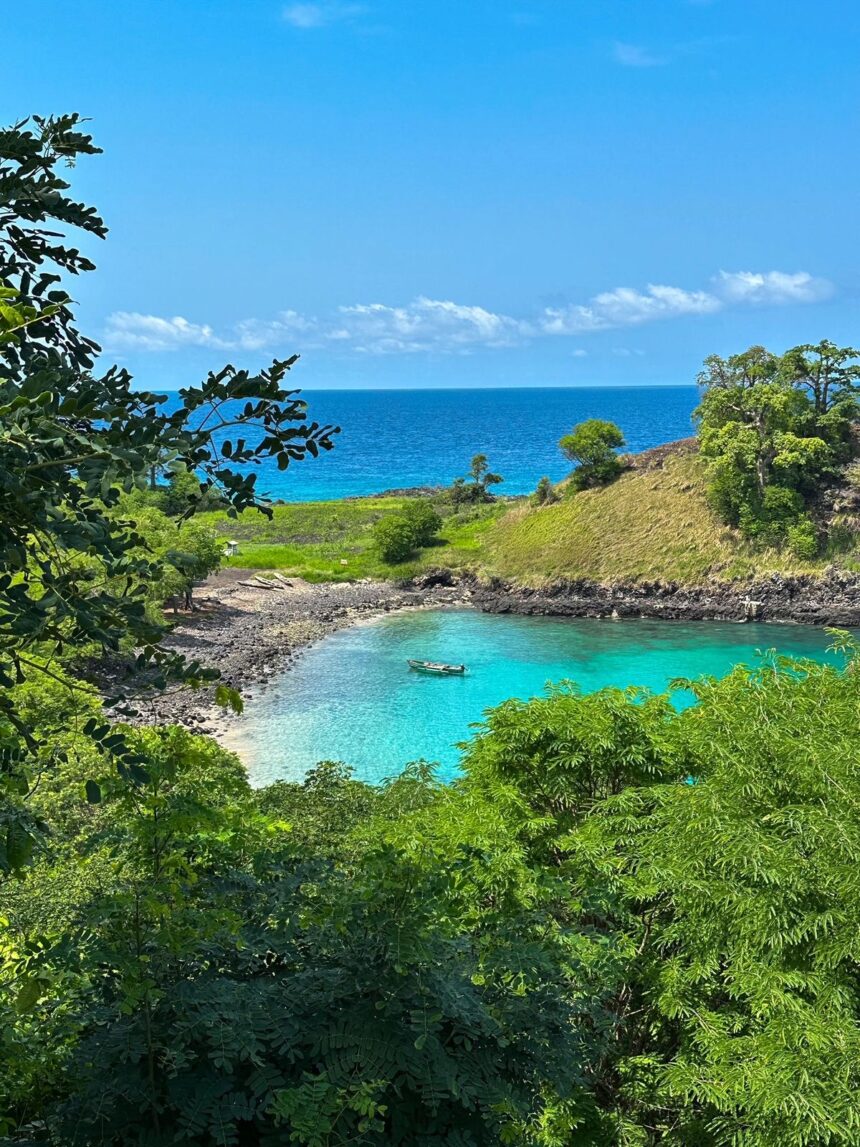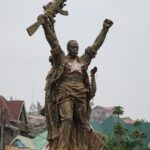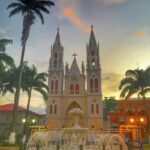Amazing Facts About São Tomé & Príncipe You Won’t Believe
São Tomé and Príncipe, a small island nation off the western coast of Central Africa, is a hidden gem in the Gulf of Guinea. Known for its lush landscapes, volcanic origins, and rich biodiversity, this country offers a unique blend of natural beauty, cultural heritage, and historical significance. Despite its small size, São Tomé and Príncipe has an intriguing story to tell.
- History of São Tomé & Príncipe
- Key Facts About São Tomé & Príncipe
- Timeline of São Tomé & Príncipe
- Significance of São Tomé & Príncipe
- Daily Life Impacts
- Observance and Important Points
- FAQs About São Tomé & Príncipe
- Social and Cultural Significance
- Wishing and Inspirational Perspective
- Conclusion: Importance in Daily Life and Society
In this article, we explore São Tomé and Príncipe’s history, key facts, timeline, cultural significance, FAQs, daily life impacts, and societal importance, presented in a human-friendly, relatable style.
History of São Tomé & Príncipe
The history of São Tomé and Príncipe is closely tied to Portuguese exploration and the Atlantic slave trade:
Pre-1470s: The islands were uninhabited before Portuguese explorers arrived.
1470–1485: Portuguese navigators discovered and claimed São Tomé and Príncipe, naming them after Saint Thomas and Prince Henry’s title.
16th Century: The islands became important for sugar plantations, which relied heavily on enslaved African labor.
17th–18th Century: Dutch, French, and British attempts to control the islands occurred, but Portuguese influence remained dominant.
19th Century: Coffee and cocoa plantations expanded, establishing São Tomé and Príncipe as a major cocoa producer.
1975: Following years of anti-colonial movements, São Tomé and Príncipe gained independence from Portugal on July 12, 1975.
Modern Era: The country transitioned from a single-party system to a multi-party democracy in the 1990s, emphasizing political stability and economic development.
Key Facts About São Tomé & Príncipe
Geography and Size: São Tomé and Príncipe consists of two main volcanic islands and several smaller islets, with lush mountains, forests, and pristine beaches.
Population: Around 220,000 people live in the country, predominantly of African descent, with a mix of Portuguese and other European influences.
Languages: Portuguese is the official language, while Forro, Angolar, and Principense are widely spoken local creoles.
Economy: Cocoa farming dominates, alongside coffee, fishing, and small-scale tourism.
Biodiversity: The islands are home to unique species such as the São Tomé fiscal bird, giant sunbirds, and endemic reptiles, as well as vibrant marine life.
Religion: Christianity, mainly Roman Catholicism, is the dominant religion, though small communities practice Protestantism and indigenous beliefs.
Political Structure: São Tomé and Príncipe is a democratic republic with a president, prime minister, and a National Assembly.
Climate: Equatorial tropical climate with high humidity and rainfall, supporting dense rainforests and fertile soils.
Cultural Heritage: Traditional music, dance, and festivals reflect the fusion of African and Portuguese influences.
Tourism Potential: Eco-tourism, hiking, birdwatching, and historical plantations attract travelers seeking natural beauty and cultural experiences.
Timeline of São Tomé & Príncipe
Pre-1470s: Islands uninhabited.
1470–1485: Portuguese explorers discover the islands.
16th Century: Sugar plantations established using enslaved African labor.
17th–18th Century: Attempts by Dutch, French, and British to control islands.
19th Century: Expansion of cocoa and coffee plantations.
1975: Independence from Portugal achieved on July 12.
1990s: Transition to multi-party democracy.
2000s–Present: Focus on tourism, sustainable agriculture, and cultural preservation.
Significance of São Tomé & Príncipe
Economic: Cocoa and coffee exports remain central to the economy, with emerging tourism opportunities.
Environmental: The islands’ rainforests and marine ecosystems are vital for biodiversity conservation.
Cultural: Unique blend of African and Portuguese traditions enriches local culture and arts.
Historical: The islands’ colonial history provides insights into the Atlantic slave trade and European influence in Africa.
Tourism: Natural beauty and cultural heritage make the islands increasingly attractive for responsible tourism.
Daily Life Impacts
Life in São Tomé and Príncipe is influenced by its geography, culture, and economy:
Agriculture-Based Livelihoods: Many residents work in cocoa and coffee plantations or small-scale farming.
Urban and Rural Dynamics: São Tomé city offers education, healthcare, and trade opportunities, while rural areas rely on subsistence farming and traditional lifestyles.
Education and Language: Portuguese-language schools coexist with local creoles, shaping literacy and cultural identity.
Healthcare: Healthcare access is improving, but rural areas face challenges in infrastructure and medical resources.
Cultural Practices: Music, dance, and festivals are integral to community life and social cohesion.
Observance and Important Points
Respect Local Traditions: Greeting customs, religious observances, and community rituals are valued.
Environmental Awareness: Protect forests, beaches, and marine ecosystems.
Health Precautions: Vaccinations and mosquito prevention are important due to tropical climate.
Support Local Economy: Purchase locally made crafts and support sustainable tourism.
Cultural Sensitivity: Engage respectfully with both African and Portuguese-influenced practices.
Travel Safety: Be aware of weather conditions, infrastructure limitations, and travel advisories.
FAQs About São Tomé & Príncipe
Q1: What is São Tomé & Príncipe known for?
A: Cocoa production, biodiversity, volcanic landscapes, and historical plantations.
Q2: How many people live there?
A: Approximately 220,000 residents across the two main islands.
Q3: Can visitors explore the islands safely?
A: Yes, with local guidance and awareness of infrastructure and climate conditions.
Q4: What languages are spoken?
A: Portuguese (official), along with Forro, Angolar, and Principense creoles.
Q5: What is the best time to visit?
A: Dry season from June to September offers comfortable weather for hiking, beaches, and exploration.
Social and Cultural Significance
Preserving Heritage: Music, dance, and storytelling preserve historical memory and local identity.
Community Life: Traditional practices foster unity, cooperation, and intergenerational knowledge sharing.
Environmental Stewardship: Conservation initiatives protect endemic species and maintain ecosystems.
Economic Opportunities: Sustainable agriculture and eco-tourism create employment and improve livelihoods.
Educational Value: Schools and cultural programs teach history, language, and environmental awareness.
Wishing and Inspirational Perspective
Learning about São Tomé & Príncipe encourages:
Cultural Appreciation: Respect for the blend of African and Portuguese heritage.
Exploration Spirit: Adventure through lush landscapes, forests, and volcanic peaks.
Global Awareness: Understanding the effects of colonial history and the importance of sustainable development.
Positive Action: Supporting eco-tourism, education, and local crafts promotes responsible engagement.
Connection: Experiencing local traditions fosters empathy, curiosity, and cross-cultural understanding.
Conclusion: Importance in Daily Life and Society
São Tomé & Príncipe, though small in size, holds immense natural, cultural, and historical value. Its lush forests, volcanic mountains, and pristine beaches provide unique ecological and tourism opportunities. Meanwhile, its history of colonization, cocoa plantations, and independence highlights broader African struggles and resilience.
In daily life, culture, agriculture, and traditions shape how residents interact, celebrate, and sustain their communities. On a societal level, São Tomé & Príncipe contributes to biodiversity conservation, eco-tourism, and cultural preservation. By learning about this island nation, we gain insights into resilience, diversity, and the importance of protecting both cultural and natural heritage.
Understanding São Tomé & Príncipe encourages responsible tourism, cultural respect, and sustainable engagement, inspiring positive impact for both visitors and residents.









Well I really liked studying it. This information offered by you is very helpful for accurate planning.
ricbbw